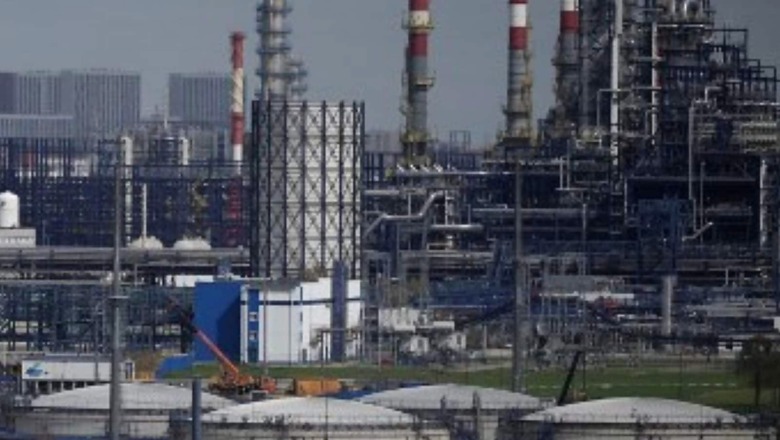
views
Energy prices are projected to decline 11 per cent in 2023 after surging about 60 per cent in 2022, the World Bank said. It added that despite this moderation, energy prices next year will still be 75 per cent above their average over the past five years.
“The price of Brent crude oil is expected to average $92 a barrel in 2023—well above the five-year average of $60 a barrel. Both natural gas and coal prices are projected to ease in 2023 from record highs in 2022. However, by 2024, Australian coal and US natural-gas prices are still expected to be double their average over the past five years, while European natural gas prices could be nearly four times higher,” the World Bank said in its report, titled ‘Commodity Markets Outlook’.
It added that the shrinking value of the currencies of most developing economies is driving up food and fuel prices in ways that could deepen the food and energy crises that many of them already face.
Elevated prices of energy commodities that serve as inputs to agricultural production have been driving up food prices. During the first three quarters of 2022, food-price inflation in South Asia averaged more than 20 per cent, the World Bank said.
Pablo Saavedra, vice-president (equitable growth, finance and institutions) of World Bank, said, “Although many commodity prices have retreated from their peaks, they are still high compared to their average level over the past five years… A further spike in world food prices could prolong the challenges of food insecurity across developing countries. An array of policies is needed to foster supply, facilitate distribution, and support real incomes.”
It added that since the outbreak of the war in Ukraine, energy prices have been quite volatile but are now expected to decline. After surging by about 60 per cent in 2022, energy prices are projected to decline 11 per cent in 2023. Despite this moderation, energy prices next year will still be 75 per cent above their average in the past five years.
John Baffes, senior economist in the World Bank’s Prospects Group, said, “The forecast of a decline in agricultural prices is subject to an array of risks… First, export disruptions by Ukraine or Russia could again interrupt global grain supplies. Second, additional increases in energy prices could exert upward pressure on grain and edible oil prices. Third, adverse weather patterns can reduce yields; 2023 is likely to be the third La Niña year in a row, potentially reducing yields of key crops in South America and Southern Africa.”
The World Bank in its report said agricultural prices are expected to decline 5 per cent next year. Wheat prices in the third quarter of 2022 fell nearly 20 per cent but remain 24 per cent higher than a year ago. The decline in agricultural prices in 2023 reflects a better-than-projected global wheat crop, stable supplies in the rice market, and the resumption of grain exports from Ukraine. Metal prices are projected to decline 15 per cent in 2023, largely because of weaker global growth and concerns about a slowdown in China.
Read all the Latest Business News here




















Comments
0 comment